-
-
Access Free Student Software
Ansys empowers the next generation of engineers
Students get free access to world-class simulation software.
-
Connect with Ansys Now!
Design your future
Connect with Ansys to explore how simulation can power your next breakthrough.
Countries & Regions
Free Trials
Products & Services
Learn
About
Back
Products & Services
Back
Learn
Ansys empowers the next generation of engineers
Students get free access to world-class simulation software.
Back
About
Design your future
Connect with Ansys to explore how simulation can power your next breakthrough.
Free Trials
ANSYS ADVANTAGE MAGAZINE
DATE: 2020
Ansys Hall of Fame Winners
By Ansys Advantage Staff
Baseball players have Cooperstown, rock-and-roll stars have Cleveland and — for the last 11 years — engineers have had the annual Ansys Hall of Fame competition. The contest showcases how engineers are using Ansys simulation solutions.
The Hall of Fame grew significantly in 2020, with a 21% increase in total submissions compared to 2019. The submissions, which were sent from nearly 20 countries, were divided into corporate and academic categories. Corporate winners included companies that used simulation to lower costs, reduce emissions, prevent damage and save time in fields as varied as asphalt equipment, electromagnetics and turbomachinery. Academic winners used simulation to detect unexploded landmines, and better understand actual and artificial hearts.
CORPORATE WINNERS

ASTEC, INC. engineers identified an opportunity to optimize an asphalt drying process in which the phase change of liquid to gas can consume half the energy input. By developing software to capture the mass transfer between aggregate particles and using Ansys to solve exchanges between the fluid phase, the team designed a more efficient dryer that lowers running costs and reduces emissions.
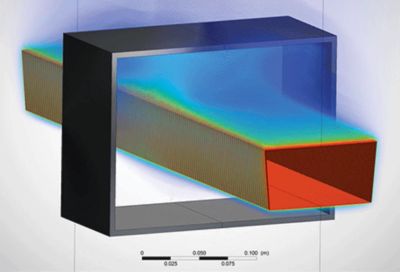
DRUIDS PROCESS TECHNOLOGY S.L. developed an electromagnetic detector to sense internal cavities that can block production in high-temperature copper. Engineers used Ansys solutions to check the coil configuration and induce currents, monitor the detector’s behavior at extreme heat, and determine whether thermal and pressure effects could damage the coil shield.
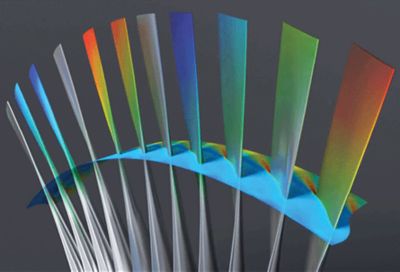
NUM solution created its own flutter tool for automatic blade flutter prediction with Ansys simulations, leading to a 60% reduction in simulation time and a 95% reduction in pre- and post-processing time. The solution is being used to accelerate the development of a flutter-free blade, which will reduce blade loss and damage in large-scale turbomachinery.
ACADEMIC WINNERS
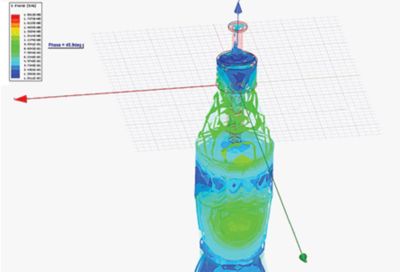
King Abdullah University of Science and Technology used Ansys to detect unexploded landmines — a massive problem in some countries — that cannot be detected with conventional radar. Researchers obtained the radar cross section of a 330-milliliter plastic bottle filled with dielectric materials to mimic explosives and applied machine learning techniques for better landmine detection.
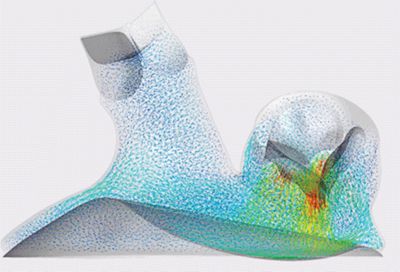
Politecnico di Milano simulated an artificial ventricle to develop a computational model that accurately reproduces the hemodynamics inside the left chamber of an artificial heart. The results from fluid–structure interaction simulations led to realistic kinematics of the valve leaflets and membrane.
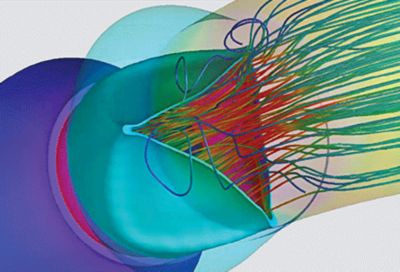
University of Rome Tor Vergata engineers used Ansys solutions to perform cardiovascular simulation with moving walls and applied it to the fluid–structure interaction analysis of a custom valve coupled with patient data. They developed a high-fidelity, fast and accurate way to bring simulation into the clinic.
Let’s Get Started
If you're facing engineering challenges, our team is here to assist. With a wealth of experience and a commitment to innovation, we invite you to reach out to us. Let's collaborate to turn your engineering obstacles into opportunities for growth and success. Contact us today to start the conversation.